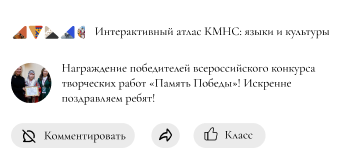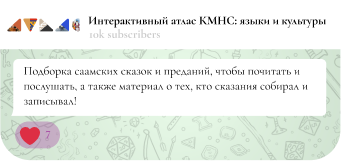|
|
Institute of Ethnology and Anthropology, Russian Academy of Sciences,
Svetlana Tyukhteneva
|
The Telengits. Spiritual Culture: Mythologies, Traditional Beliefs, Holidays, and Rituals
The religious life of the modern Telengits is based on their relationship to the land, both to the local area of residence and the entire Altai, although, at first glance, the life of the two Telengit districts differs significantly. A salient feature of the Telengit population of the Ulagan district is the combination of Orthodox Christianity and the cult of nature with some other religious practices and ideas.
Ulagan was one of the main areas of activity of the Altai Spiritual Mission, set up in 1828-1830.
Orthodox Christianity still influences the lives of locals, however, one can confidently say that the reverence for Mother Earth,
Jer ene
, is the main feature of religious practice in both Telengit districts. Respect for the land is manifested not only in the veneration of individual sacred places, such as mountains (
yyyk tuu
) or healing springs (
arzhan suu
), but above all in the attitude of the Telengits to the Altai. One can say that the Altai is an integral part of a man for the Telengits. The residents of the Kosh-Agach district, for example, maintain that they live in
Ere Chuy
. The Kosh-Agach district is regarded as an administrative unit and
Ere Chuy
is the spiritual representation of the same land.
The Telengits, according to the field materials of Agniezska Halemba, describe it with the adjective
agaru
meaning “something pure and holy.” The name
Ere Chuy
is associated with the river Chuy (Chuya), and the significance of this area is also determined by the flow of the river. The places in the upper reaches of the Chuy are considered the most sacred, and its influence seems to move with its flow eventually affecting other places and the entire Altai in general. In the Telengit districts you can see heaps of roadside stones called
uule
. They are piled up by people traveling for some important occasion, for instance, to a wedding or matchmaking, on holiday, or to study at a university. They only stop by an
uule
when it is necessary to ask for a blessing or thank the
eeler
, the master-spirits of the area. The Telengits also leave coins, food, and drinks in these places, and tie the
jalama
, scraps of cloth, which are primarily white. If there are trees around, the
jalama
is tied to a larch.

The
eeler
master-spirits play a major role in the religious life of the Telengits. Although there are many other magic entities, the
eeler
have the greatest influence on human life. Telengits say
Ee jok neme jok
(“Nothing happens without the master”).

Researchers most often describe the meaning of this term in relation to sacred or special places. This concept allows people to discuss the internal or hidden energy of different beings, things, and phenomena and interact with them.
Altaidyn eezi
and
Altai Kudai
are the two concepts whose religious importance for the Telengits cannot be overestimated.
Altaidyn eezi
is the master of the Altai in relation to both the entire territory and certain special places. Thus, it is a metonymy: when mentioning
eezi
, the Telengits refer both to a specific place and the whole Altai. In recent years, the concept of
Altaidyn eezi
has been supplemented by the concept of
Altai Kudai
. This expression emphasizes the divinity and sacredness of the whole Altai.

For the Telengits, the Altai is the most sacred concept. The transcendental god (
kudai
) and the immanent Altai are combined here into one entity. The Telengits themselves do not call their beliefs shamanism, Buddhism, or even Burkhanism, although, naturally, all these terms are well known to them. They say that they have their own faith (
boyynyn jany
), and for an outsider, they prefer to name it
altai jan
“the Altai faith.” The Telengits call anyone who has any spiritual knowledge
neme biller kizhi
(“a person who knows something”). In the most general terms, the Telengits divide all people into
biler ulus
and
bilbes ulus
, people who know and people who do not. The term
kam
, shaman, is used but rarely, and only in relation to some individuals of our time or when talking about “the people who know” of the past. The
kam
is considered the most powerful among “those who know”.
There is an opinion that being a
kam
is an extraordinary difficult vocation. It is dangerous to be a shaman as it may bring a lot of pain. The
kam
's family usually does not welcome his or her shamanic calling, despite the obvious prestige of this occupation. However, the shaman's knowledge is potentially dangerous both for the clients and for the shaman himself/herself. The power of a shaman is believed to be a potential that can be used in different ways.

The Telengits widely celebrate national and some Christian and Russian holidays. In the Ulagansky district, where there are many baptized Telengits, more importance is attached to such holidays as Christmas, Easter, or the so-called parental days (Remembrance of Parents) than in the Kosh-Agach district. National holidays include New Year, Old New Year, The Defender of the Fatherland Day, International Women's Day (March 8), Farewell to Winter, May Day, Victory Day, Independence Day, Children's Day, Youth Day, etc. On these days, the Houses of Culture host concerts and meetings. Furthermore, most residents hold big celebratory dinners, where they serve dumplings, meat patties, and a variety of salads. In addition, cultural workers and the administration organize holidays for villages, streets, clans, and families. The Telengits also take an active part in such nationwide Altai holidays as
Jylgayak
,
Sary Bur
and
El Oyyn
.
One Telengit holiday is of particular importance. It is called
Chagaa bayram
, the lunar New Year, and takes place in January-February. Until the 1990s, it had been celebrated mainly in the Kosh-Agach district, but in the wake of the national and cultural revival, it spread to other areas of the Republic. However, for the Telengits of the Kosh-Agach district,
Chagaa
is not only a public, but also a family holiday. The exact date is determined by the older members of the family via the phase of the moon and the movement of the stars; the Pleiades (
Ulker
) are considered the most important constellation.
The significant religious holidays also include a Prayer to Altai, (
Altai takyyry
or
Altai kӧdurgeni
). In the Ulagan district, this prayer is still held on the slopes of the mountains near the villages of Balyktuyul and Saratan. In the Kosh-Agach district, this prayer is held annually near the village of Telengit-Sortogoi by Mount
Kӧk yyyk
.


























































